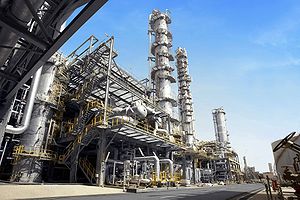T he International Energy Agency has said that petrochemicals will account for more than 33 percent of oil demand growth globally in the period to 2030. This means that petrochemicals not fuels (petrol, diesel, and other fuels) would drive oil demand in the coming years. The projection is contained in a newly released report titled “The Future of Petrochemicals”, in which the IEA is aiming to uncover “blind spots”, or facets of the global energy industry that receive less attention than they deserve.
he International Energy Agency has said that petrochemicals will account for more than 33 percent of oil demand growth globally in the period to 2030. This means that petrochemicals not fuels (petrol, diesel, and other fuels) would drive oil demand in the coming years. The projection is contained in a newly released report titled “The Future of Petrochemicals”, in which the IEA is aiming to uncover “blind spots”, or facets of the global energy industry that receive less attention than they deserve.
It also said that plastics would displace fuels as the main driver for crude oil demand and that, by 2050, petrochemicals will drive half of the global oil demand growth, raising this demand by 7 million barrels per day by that year.
“Petrochemicals are one of the key blind spots in the global energy debate, especially given the influence they will exert on future energy trends,” Fatih Birol executive director of IEA said. Petrochemicals are not just the plastics used in grocery bags, but petrochemical products are also essential in renewable energy installations such as solar panels and wind turbines, but also batteries, and thermal insulation, and thousands of other products and components.
Petrochemicals are components derived from oil and gas that are used in all sorts of daily products such as plastics, fertilisers, packaging, clothing, digital devices, medical equipment, detergents and tyres, and they are set to become the largest drivers of global oil demand, in front of cars, planes and trucks.
The IEA says demand for plastics has almost doubled over the last 18 years, exceeding the demand growth rate of every other bulk material, including steel, aluminum, and cement, and more importantly, emerging markets have yet to catch up to developed ones in their plastics consumption, which means steady demand is bound to rise in the future.
Petrochemicals are indeed Big Oil’s big hope for the future, but the more distant future. Petrochemicals are used in thousands of products, with the biggest group among these being plastic products, but the bad news for oil is that green initiatives around the world are mounting, and many of them are targeting precisely this group of products. Yet, even if plastic products are removed from the supply chain, enough demand will remain to drive the consumption of crude oil.








